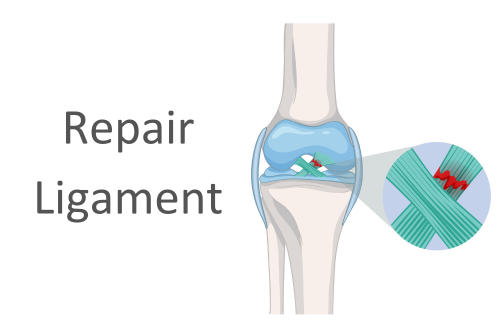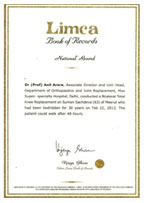
Everything You Need to Know About Arthroscopic Surgery
Arthroscopic surgery is a game-changer in modern medicine. It’s a minimally invasive surgical technique used to diagnose and treat joint problems. Whether you’re dealing with chronic joint pain, a sports injury, or arthritis, arthroscopy might be the solution that you’re looking for.
What Is Arthroscopic Surgery?
Arthroscopy comes from two Greek words: arthro (joint) and skope-in (to look). It essentially means “looking inside the joint.” Unlike traditional open surgery, arthroscopic surgery involves making small Key-hole incisions and using a tiny camera (called an arthroscope) to view and treat joint issues.
The arthroscope is connected to a video monitor, allowing surgeons to see the inside of the joint in high detail. This procedure is performed on various joints, including the knee, shoulder, hip, ankle, elbow, and wrist.
Why Is Arthroscopic Surgery Performed?
Arthroscopic surgery is used for both diagnostic and management purposes. Common reasons include:
1.Diagnosis
Sometimes, imaging tests like X-rays, CT-scan and MRI cannot provide clear answers about a joint problem. Arthroscopy allows the surgeon to directly inspect the joint and identify the issue accurately.
2.Treatment
Arthroscopy can treat a variety of conditions, including:
- Torn ligaments or cartilage
- Joint inflammation
- Loose bone or cartilage fragments
- Damaged or mal-aligned kneecaps
- Rotator cuff injuries
- Arthritis-related joint damage
How Is Arthroscopic Surgery Performed?
The procedure typically follows these steps:
1. Preparation
Before surgery, the patient undergoes medical evaluation and imaging tests to determine the exact problem. You may need to avoid food, drink, or certain medications as instructed by your doctor.
2. Anesthesia
Depending on the joint being operated on, the anesthetist may use general, local, or regional anesthesia. General anesthesia puts you to sleep, while local or regional anesthesia numbs the specific area.
3. Incisions
The surgeon makes one or more small incisions, usually about the size of a buttonhole. Through these incisions, the arthroscope and other specialized instruments are inserted.
4. Examination and Repair
The arthroscope sends live video to a monitor, guiding the surgeon as they examine the joint. If repairs are needed, such as removing torn cartilage or repairing ligaments, they use miniature surgical tools inserted through the additional incisions.
5. Closing the Incisions
Once the procedure is complete, the surgeon removes the instruments and closes the incisions with stitches or adhesive strips. A bandage is applied to protect the area.
What Are the Benefits of Arthroscopic Surgery?
Arthroscopic surgery offers several advantages over traditional open surgery:
1. Minimally Invasive
Small incisions mean less tissue damage and quicker recovery.
2. Shorter Recovery Time
Patients often return to daily activities faster than with open surgery.
3. Lower Risk of Complications
Smaller incisions reduce the risk of infections and excessive bleeding.
4. Outpatient Procedure
In many cases, arthroscopy is performed as a day-care procedure, allowing you to go home shortly after surgery.
5. High Accuracy
The magnified view provided by the arthroscope allows for precise diagnosis and treatment.
What to Expect After Arthroscopic Surgery
Recovery depends on the type of surgery and the joint involved. Here’s a general timeline:
1. Immediately After Surgery
You’ll rest in a recovery room until the effects of anesthesia wear off. Most patients can go home the same day, but you’ll need someone to drive you.
2. Pain and Swelling
Mild discomfort, swelling, and stiffness are common in the first few days. Pain relievers and ice packs can help.
3. Physical Therapy
Rehabilitation is crucial for regaining joint strength and mobility. Your doctor will recommend specific exercises or a physiotherapist to guide your recovery.
4. Return to Normal Activities
Most people resume light activities within a week or two, but full recovery may take weeks to months, depending on the complexity of the procedure.
Are There Any Risks or Complications?
While arthroscopic surgery is generally safe, no procedure is entirely without risks. Potential complications include:
- Infection
- Blood clots
- Nerve or blood vessel damage
- Persistent joint stiffness or pain
These risks are rare and can often be minimized by following your surgeon’s instructions.
Who Is a Good Candidate for Arthroscopic Surgery?
Arthroscopy is suitable for individuals experiencing joint pain, stiffness, or limited mobility that doesn’t improve with nonsurgical treatments like medication or physical therapy. However, not all joint issues require surgery. Your doctor will determine if arthroscopy is the right option for you based on your condition and medical history.
Myths vs. Facts About Arthroscopic Surgery
Myth: Arthroscopy is only for athletes.
Fact: While it’s popular among athletes, arthroscopy benefits anyone with joint problems.
Myth: Recovery is instant.
Fact: Recovery is faster than open surgery but still requires time and effort.
Myth: Arthroscopy cures arthritis.
Fact: Arthroscopy can relieve arthritis symptoms but doesn’t cure the disease.
Tips for a Smooth Recovery
- Follow Doctor’s Orders: Stick to prescribed medications and activity restrictions.
- Attend Physical Therapy: Don’t skip physiotherapy sessions; they’re crucial for regaining strength.
- Stay Active Gradually: Avoid strenuous activities until your doctor approves.
- Manage Pain: Use ice packs, elevate the joint, and take medications as advised.
Final Thoughts
Arthroscopic surgery is a safe, effective, and minimally invasive option for diagnosis and management of joint problems. Whether you’re an athlete recovering from an injury or someone dealing with chronic joint pain, arthroscopy can offer relief and improve your quality of life.
If you’re considering this procedure, consult a qualified orthopedic surgeon to discuss your options. With proper care and rehabilitation, you’ll be back on your feet in no time!




